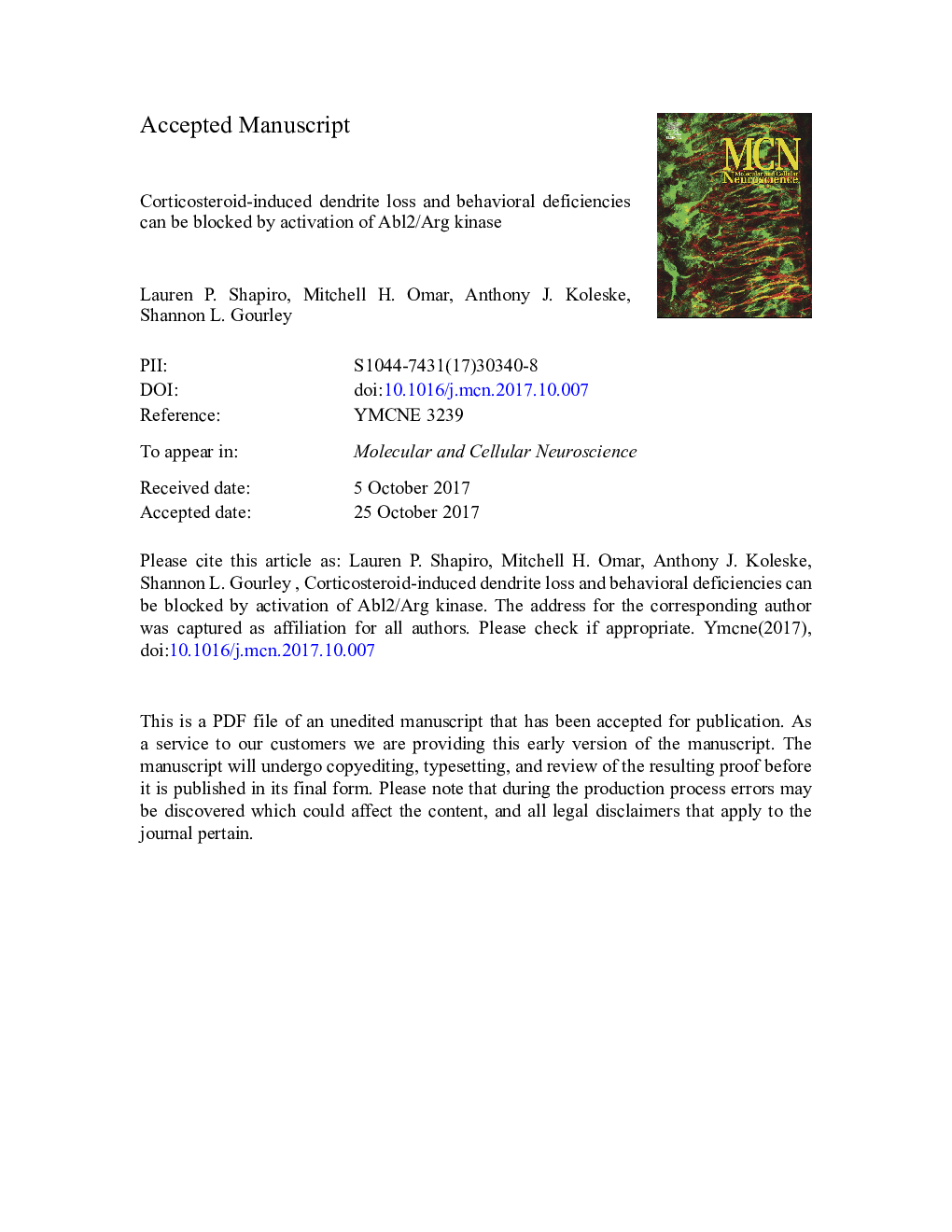| Article ID | Journal | Published Year | Pages | File Type |
|---|---|---|---|---|
| 8478424 | Molecular and Cellular Neuroscience | 2017 | 35 Pages |
Abstract
Stressor exposure induces neuronal remodeling in specific brain regions. Given the persistence of stress-related illnesses, key next steps in determining the contributions of neural structure to mental health are to identify cell types that fail to recover from stressor exposure and to identify “trigger points” and molecular underpinnings of stress-related neural degeneration. We evaluated dendrite arbor structure on hippocampal CA1 pyramidal neurons before, during, and following prolonged exposure to one key mediator of the stress response - corticosterone (cortisol in humans). Basal dendrite arbors progressively simplified during a 3-week exposure period, and failed to recover when corticosterone was withdrawn. Corticosterone exposure decreased levels of the dendrite stabilization factor Abl2/Arg nonreceptor tyrosine kinase and phosphorylation of its substrates p190RhoGAP and cortactin within 11Â days, suggesting that disruption of Arg-mediated signaling may trigger dendrite arbor atrophy and, potentially, behavioral abnormalities resulting from corticosterone exposure. To test this, we administered the novel, bioactive Arg kinase activator, 5-(1,3-diaryl-1H-pyrazol-4-yl)hydantoin, 5-[3-(4-fluorophenyl)-1-phenyl-1H-pyrazol-4-yl]-2,4-imidazolidinedione (DPH), in conjunction with corticosterone. We found that repeated treatment corrected CA1 arbor structure, otherwise simplified by corticosterone. DPH also corrected corticosterone-induced errors in a hippocampal-dependent reversal learning task and anhedonic-like behavior. Thus, pharmacological compounds that target cytoskeletal regulators, rather than classical neurotransmitter systems, may interfere with stress-associated cognitive decline and mental health concerns.
Related Topics
Life Sciences
Biochemistry, Genetics and Molecular Biology
Cell Biology
Authors
Lauren P. Shapiro, Mitchell H. Omar, Anthony J. Koleske, Shannon L. Gourley,
